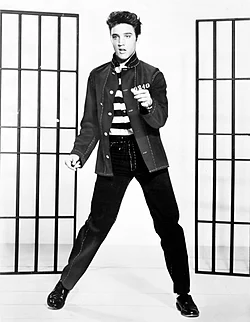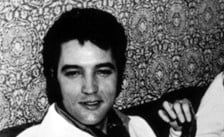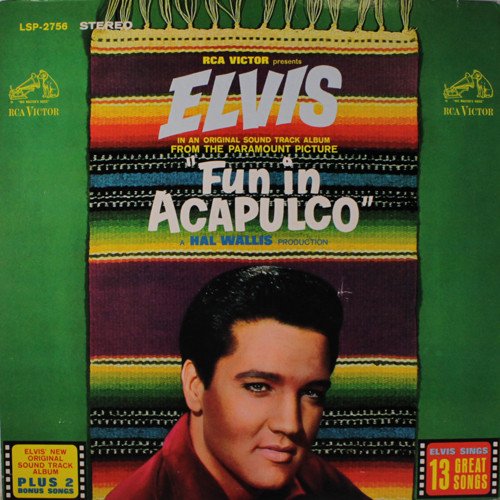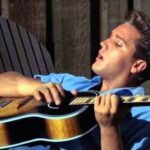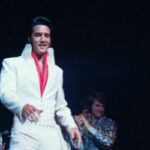“Easy Come, Easy Go” the last EP in Elvis Presley’s discography and the end of the collaboration with Hall B. Wallis
“Easy Come, Easy Go” may not have been Presley’s most important film, and its soundtrack didn’t contain any timeless hits, but given its historical background and the circumstances of its creation, it can be described as a discovery…
On September 27, 1966, Elvis arrived in Los Angeles at Paramount Pictures for a pre-production meeting with film director John Rich and producer Hall B. Wallis.
During the session, the musical themes of the new production were mainly discussed. Elvis was clearly disappointed and disillusioned with the quality of the material he had recently been offered to record. He was fed up with singing weak songs with silly lyrics, often directed at howling dogs, clucking chickens, or buckets of shrimp. On the “Double Trouble” album released a few months earlier, he began to strive to obtain better material to be ready for his apprentice. He was aware that the recordings from the latest films could not be used in any subsequent publications because they were merely a commentary on a selected scene from a given picture. Adding to the seriousness of the situation was the fact that a few months earlier, in May, during the filming of Nashville, Elvis had recorded his first excellent “non-film” songs in years, and he was reluctant to start working on new soundtracks. In this tense atmosphere, Freddie Bienstock, who was responsible for selecting material, had to compile and prepare the songs for the next recording session.
Among the twelve compiled demonstration CDs he presented to Presley were classics such as Leiber and Stoller’s “Saved.”
However, the songs weren’t the only problem. The conflict between Elvis, his manager, Colonel Parker, and Hall Wallis also escalated.
The producer no longer wanted to give way to Presley in everything and, despite his habit of working in small recording studios in the afternoon, forced him to record the film’s music early in the morning on the enormous Paramount Studio Recording Stage.
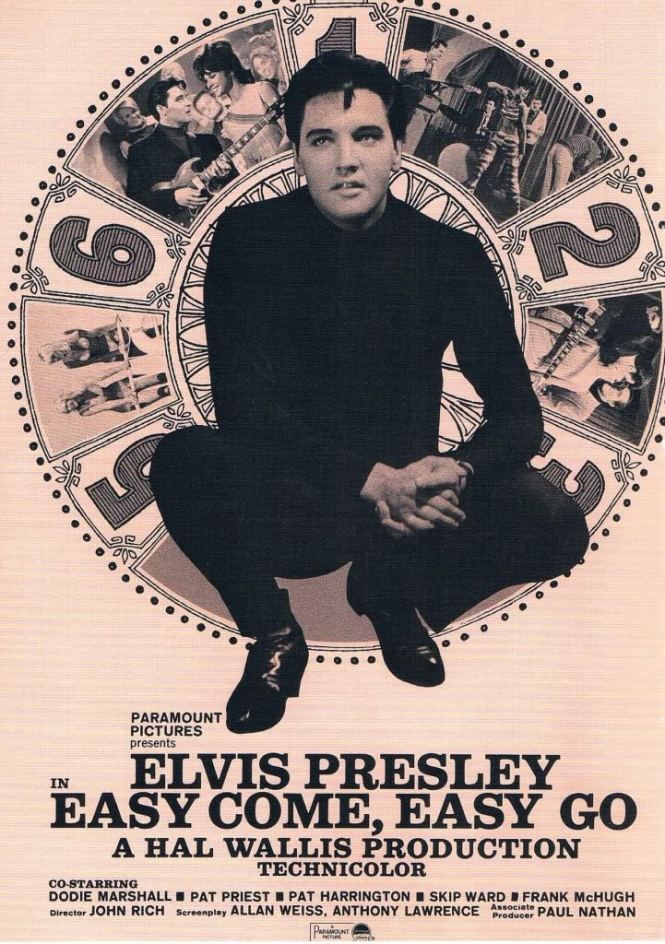
In the recording studio
The next day, September 28th, unfamiliar with working so early, Elvis missed a costume fitting, which greatly angered Paramount management. After the meeting, he went to his dressing room for lunch and then headed off to the recording session scheduled for 10:00 a.m.
He showed up at the studio several ten minutes late (so late that it was noted in the session documentation).
His arrival was already awaited by a band consisting of: Scotty Moore, Tiny Timbrell and Charlie McCoy on guitars (McCoy also played harmonica and organ during this session), Bob Moore and Jerry Scheef (Scheef also played saxophone that day) on bass, DJ Fontana, Murrey “Buddy” Harman, Hal Blaine, Curry Tjader on drums, Emil “Richards” Radocchia on drums, Michael Rubini on harpsichord, Mike Henderson on trumpet and William “Butch” Parker on trombone. group The Jordanaires.
Paramount Pictures producer Joseph J. Lilley and sound engineer James Wright oversaw the recording.

Recordings began with the title track, “Easy Come, Easy Go,” written by Sid Wayne and Ben Weisman, the authors of many of Elvis’s early film hits. Presley chose their version, rejecting another composition of the same name by Gerald Nelson.
The musicians recorded up to ten attempts for this piece and only number nine was considered the best and described as the master version.
All the songs the studio worked on that day were written specifically for the new film.
Another, “I’ll Take Love,” was composed by American actress Dollores Agnes Fuller, who died in May of this year at the age of eighty-eight (author of, among others, recordings by Presley “Rock-A-Hull Baby” and “I Got Lucky”) and Marek Barkan.
The song had a rousing Latin American rhythm that the musicians in the studio didn’t quite nail (the first attempt was played too slowly, which Elvis noticed after the introduction, calling out to the keyboardist, Bob Moro, on bass, “too slow…”). The piece was recorded after only five rehearsals (the second attempt was described as Takes 2A and 2B).
The resulting effect was unsatisfactory and required corrections. However, the entire song was abandoned, and attention was focused only on the problematic section (according to Keith Flynn’s website, it was just a moment away from the ‘second connector’).
Finally, the song “I’ll Take Love” was composed from the fourth and third rehearsal of the working part of the recording, the so-called lifting.

It was the last track recorded before the several-hour break. Elvis didn’t begin working on the next recordings until the afternoon, around 7:30 p.m.
After returning to the studio, the musicians recorded two more songs. Both were submitted to the session at the request of Freddie Bienstock, Gerald Nelson, and Fred Burch. The first of these compositions, “Sing You Children,” seemed to meet all of Elvis’s requirements. The lyrics told the story of the biblical heroes Joshua and Jonah, and the music was based on traditional gospel melodies.
“(Elvis) was a good friend, and I respected his friendship so much that I never asked him to record any of my work. Lamar Fike or Freddie Bienstock introduced them to him. They would usually send me a script and say, ‘Write something for this movie.’ Mostly it was funny or crazy. […] ‘Yoga Is As Yoga Does,’ does anyone write songs with that title today? I thought, this nonsense must be a joke. It turned out to be absolutely the worst song I’ve ever heard. This crazy composition was used in the movie “Easy Come, Easy Go,” along with two others, “Sing You Children” and “The Love Machine.” There were four songs in the movie; I wrote three of them. The fourth, the best one, ‘Easy Come, Easy Go,’ was not used,” Gerald Nelson recalled years later.
It took Elvis twenty-two attempts to record the master version of this song! In his early attempts, he clearly tried to copy Gerald Nelson’s demo, but eventually he abandoned it and the arrangement of the piece changed slightly, giving it a different, livelier rhythm.
It soon turned out that “Sing You Children” was the best song recorded during this three-day session.
Several dozen minutes before the end of the first day of recording, Elvis committed to recording the song “The Love Machine” (also written by Gerald Nelson, Fred Burch, this time in collaboration with Chuck Taylor).
Unfortunately, after only eleven attempts, further attempts were abandoned. The recorded material wasn’t sufficient for the master version and needed to be refined the day after the session.
At a quarter to twelve, Elvis left the studio building.
On the second day of work on the soundtrack, Presley entered the studio shortly after 1 p.m. There were some changes in the composition of the backing band. Larry Bunker played drums that day, Anthony Terran on trumpet, Meredith Flory, William Hood on saxophones, and, as the day before, Jerry Scheff, who met Elvis for the first time during this session, unofficially beginning a long-term collaboration with the singer, which continued from 1969 to 1977 as a member of the group TCB.
“All I remember is that session with the trumpet. Reason, I needed the money. Red West called me and said, “Are you trumpet player Jerry Scheff?” ‘Yes!!!’ (Laughs) I answered. I played trumpet all my childhood and time in the Navy. So I borrowed an old, horribly worn, horrible-looking silver trumpet from a guy—no coincidence—and just kept that trumpet. I played for two days and got $900 for those two days. That was a lot of money at the time. I never played anything they could hear. I never played high notes, I just played them in harmony with the other horns. Nobody said anything. They didn’t call me back, but… (laughs)” Jerry Scheef recalled his early recording sessions with Elvis Presley in an interview with Arjan Deelen.

The first song Elvis leaned on this afternoon was Bob Johnston’s “She’s a Machine” (signed on the record and in the session documentation by his wife, Joy Byers). The songwriter wrote about eighteen other Presley film recordings, including the hit “It Hurts Me” from the 1963 film session for “Kissin Cousins.”
Unfortunately, this recording was not a success. On the Australian Elvis Fan Club website, in the text dedicated to “Easy Come, Easy Go,” we can even read that “he (Elvis, the author) hated the song ‘She’s A Machine.'” It was recorded after only fifteen attempts (the thirteenth was described as the film master, and the final fifteenth rehearsal for the album version).
Between rehearsals, Elvis constantly complained about the song’s nonsensical lyrics. After one of the following failed attempts, when Charlie Hodge tried to pitch him the correct melody line, the singer, quoting the song’s lyrics, remarked: “…this is wrong, this is wrong, ‘she’ll kiss every fifteen minutes,’ that’s bad news.”
As a result, at Presley’s express request, the song “She’s A Machine” was not used in the film and was not included on the extended play album with its soundtrack.
The next few minutes were spent finishing work on the song “The Love Machine,” which he started the night before.
This time only three close-ups were recorded, of which the first (twelfth in order, keeping the numbering of the previous day) was classified as the master disc version, while the third and last (fifteenth in the numbering of the previous day) as the film version.
Further recording continued only after a break of more than an hour, around 9:00 p.m. The first piece the musicians returned to at this point was a composition by Gerald Nelson and Fred Burch, “Yoga Is As Yoga Does.” A song that Nelson himself (the composer of the music) said was the worst song he had ever heard.

It took twelve attempts to record his master version. Between successive attempts, Elvis was forthright in expressing his displeasure (after the fifth failed attempt, an irritated Presley summed up the recording with the word… “shit”).
Paradoxically, the worst song of the entire session was used in one of the film’s funniest scenes. On screen, Presley performed a duet of “Yoga Is As Yoga Does,” similar to Gerald Nelson’s demo album. The female vocalist was Elsa Lanchester, wife of Charles Laughton, who, during one of Presley’s early appearances on the Ed Sullivan Show, announced him as a replacement for the absent host.
Unfortunately, the song “Yoga Is As Yoga Does” just began a series of horrible recordings the musicians had to deal with later that night.
The next one, “Stop, You’re Wrong,” was delivered to the session by composers Bill Giant, Bernie Baum, and Florence Kaye, known until now for their hit songs, such as “(You’re The) Devil In Disguise,” “Ask Me,” or the film “Roustabout.”
His last song, however, was not a hit. Elvis found the original lyrics so bad that he not only stopped recording it, but also asked his friend Red West to correct it.
At the end of the session, the singer didn’t sing a single song. Wanting to use the remaining time, the musicians recorded two more instrumental tracks. The first was “Stop, You’re Wrong,” renamed “You Gotta Stop,” and the second was Ray Charles’s “Leave My Women Alone,” for which Elvis never recorded his vocals for unknown reasons (although some researchers of the singer’s discography believe that on both instrumental tracks, Elvis sang a backing vocal to The Jordanaires).
The second day of recording on the Paramount Studio Recording Stage ended a few minutes after two in the morning.
Unfortunately, the song “Yoga Is As Yoga Does” just began a series of horrible recordings the musicians had to deal with later that night.
The next one, “Stop, You’re Wrong,” was delivered to the session by composers Bill Giant, Bernie Baum, and Florence Kaye, known until now for their hit songs, such as “(You’re The) Devil In Disguise,” “Ask Me,” or the film “Roustabout.”
His last song, however, was not a hit. Elvis found the original lyrics so bad that he not only stopped recording it, but also asked his friend Red West to correct it.
At the end of the session, the singer didn’t sing a single song. Wanting to use the remaining time, the musicians recorded two more instrumental tracks. The first was “Stop, You’re Wrong,” renamed “You Gotta Stop,” and the second was Ray Charles’s “Leave My Women Alone,” for which Elvis never recorded his vocals for unknown reasons (although some researchers of the singer’s discography believe that on both instrumental tracks, Elvis sang a backing vocal to The Jordanaires).
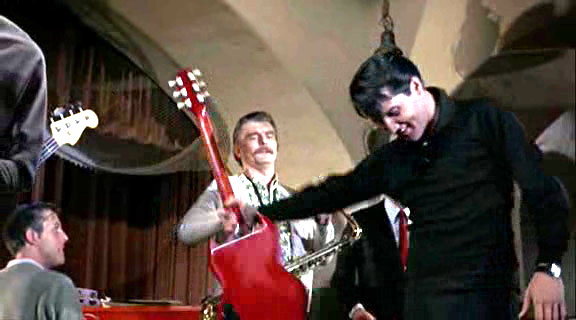
The next day, September 30, Elvis returned to the studio to re-record his vocals for the song “You Gotta Stop.” He did it the first time (Presley’s vocals were mixed with the fifth rehearsal of the instrumental track recorded the night before).
During the remaining sessions, the musicians worked on the instrumental pieces for the new film. Within a few hours, among others were “Aches and Pains” (also known as “Go Go Jo,” used in the film), “Second Rate Street” (also known as “Freak Out,” used in the film), “My Baby” (not used), “Can I Get a Witness” (used only as a tempo guide), “You’re Wonderful One” (not used), and “Distortion” (used as a tempo guide).
After completing the soundtrack, Elvis went to the set of his next film. Shooting began three days later, on October 3, 1966.
On the set of “Easy Come, Easy Go”
“Easy Come, Easy Go” was a skillfully told story of a U.S. Navy diver, Lt. Ted Jackson (we see Elvis on screen in this role), who on his last day of duty comes across a sunken ship with a treasure chest on it.
After becoming a civilian, Jackson, with the help of his friends, decides to recover the valuables he believes will ensure him a long and prosperous life…
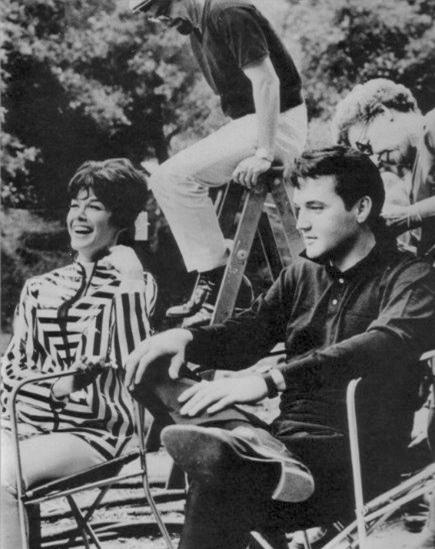
He enlists the help of the eccentric Captain Jack, considered an expert on maritime legends in the city. The latter, however, has no idea what kind of cargo the ship might have. However, he reveals to Ted the name of the ship’s captain’s last descendant, “Port of Call.” It turns out to be the beautiful Jo Symington (played by Dodie Marshall). After much persuasion, he agrees to help a handsome diver recover the mysterious chest, but he sets one condition: all the money he earns must be donated to the art gallery he runs.
However, before the treasure reaches the heroes, a whole series of fun (but not only) adventures await them.
Allan Weiss wrote the film’s screenplay, along with Blue Hawaii and Roustabout and Anthony Lawrence. The film was directed by John Rich.
The first shot was taken on the set of the new film on October 3, 1966. A week later, on October 7, the crew began shooting outdoors at the Long Beach Naval Station.
In addition to Presley, the screen stars included Frank McHugh in the signature role of Captain Jack (his last film role of more than 150) and Pat Harrington, who played the main character’s friend, Judd Whitman. It was on his album “Easy Go-Go” that Elvis performed most of his songs (including the memorable “The Love Machine” in the circle with pictures of girls and the final “I’ll Take Love”).
However, work on the film didn’t always proceed in a pleasant atmosphere. During filming, there were several unpleasant and threatening incidents.
Elvis’s half-brother, Billy Stanley, shared a story with fans on social media about an accident that happened during a break between photo ops.
“When Elvis was making the movies, I remember when he came back to Graceland he would tell us about the movie and what happened while he was working on the set… When he was making the movie, he told us he almost drowned in one of the scenes. During the break, he sat in an upside-down boat, he was wearing all his scuba gear, a wave came up, he fell behind the boat and started sinking. As he was sinking, he managed to get his heavy belt off and float to the surface. It was the only time he was ever scared while filming.”
Disagreements between director John Rich and Elvis also had a negative impact on the atmosphere on the set. The two had already worked on the film “Roustabout” and disliked each other at the time. The director didn’t tolerate members of the so-called Memphis Mafia, who accompanied Elvis at every turn and interrupted his work more than once. However, the singer had a completely different opinion on this matter… The Australian Presley Fan Club, in an article about the film “Easy Come, Easy Go,” writes: “One afternoon, Elvis and Red West tried to act out a scene, but were interrupted by a giggle. Angered by this unprofessional behavior, Rich kicked all of Elvis’s fellow bodyguards off the set. Elvis was furious. When he distanced himself from Rich and the film’s producers, he candidly confessed, ‘Now wait a minute. We only make these movies to have fun, for nothing else. So now, if we stop having fun, we stop making it.”
Presley’s words seemed only to confirm what those around him had long known. The singer didn’t take his films seriously and began to lose hope of being entrusted with a good dramatic role. Slowly, he became less involved, and the weaker effects of his work became visible with each successive release.
“Easy Come, Easy Go” officially ended on November 7, 1966. However, producer Hal B. Wallis kept Elvis in Hollywood for another two weeks. Presley lived at his Palm Springs estate until November 22. Here, too, he and his manager, Colonel Parker, celebrated Thanksgiving on November 24.
He returned to Memphis the next day on the Greyhound, his specially adapted private bus.
“Easy Come Easy Go”
Various working titles were used on set, including “Easy Does It,” “Nice And Easy,” “Port Of Call” (from the film Sunken Ship), and “A Girl In Every Port.” Ultimately, however, the title of Paramount Pictures’ most recent production starring Elvis Presley was taken from one of the songs he had recorded a few weeks earlier, “Easy Come, Easy Go.”
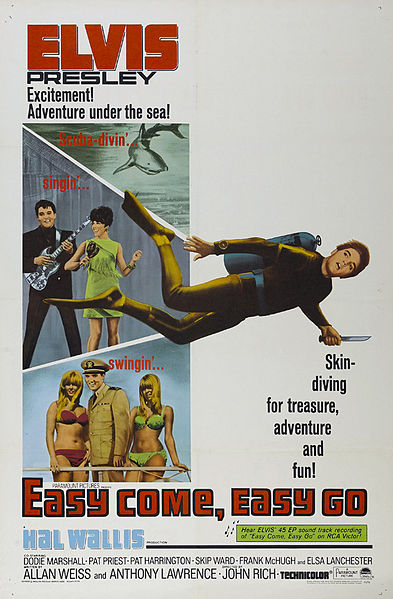
The ninety-five-minute film hit theaters on March 22, 1967. A Variety review said that “compared to similar films, Elvis’s are of a higher class: the plot is meaningful, the songs are better and more relevant, and the cast, direction, and production are of the highest quality.” The Los Angeles Herald-Examiner, in turn, stated that “Elvis looks great and eternally youthful” and that “…he is an excellent actor!”
Eventually, Variety ranked “Easy Come, Easy Go” as the most profitable film of 1967, reaching number 50.
The extended play album featuring music from the film, released on March 24, 1967 (some sources give the date as March 10, 1967), fared much worse commercially. Six songs were included on the album “Easy Come, Easy Go” (RCA Victor EPA-4387). At Elvis’s request, the song “She’s A Machine” was omitted from his composition, which was first released a year later on the compilation album “Singer Presents Elvis Singing: Flaming Star and Others.”
The album “Easy Come, Easy Go” was a total flop. It never entered the Billboard charts, and only 300,000 copies disappeared from store shelves! Years later, it turned out to be the worst-selling album of Elvis’s entire discography.
Their image only improved slightly with the single featuring the songs “The Love Machine” and “You Gotta Stop,” released in Britain in May 1967. This release reached a fairly high position, number thirty-six in the charts.
As a curious aside, five years later, in 1972, a long-playing record titled “Easy Come, Easy Go” was released in England by RCA Camden. It consisted of twelve film recordings, and the fact that it included a photo of Presley’s wedding on the cover made it special.
In his book “Elvis,” Leszek C. Strzeszewski wrote: “In 1967, movies starring Elvis didn’t automatically become box office hits, as they used to be. Of course, they were still very profitable, but it took longer. The public was tired of repeat scenarios.”
“Easy Come, Easy Go” marked the end of Presley’s film career to that point. After completing his film project, following a ten-year collaboration, he parted ways with producer Hall B. Wallis.

“Working with Elvis has always been a fun activity. I haven’t had any problems with him for years. He was a great apprentice and kept asking me how he could improve his game to be even better. He was always so humble that it was dissipated by his greatness. In fact, he was a perfectionist and wanted to do the best he could. I remember repeating the same scene twenty times until he was satisfied,” the singer’s producer recalled in Peter Haining’s book “The Private Life of Elvis.”
In turn, after the release of the album “Easy Come, Easy Go,” RCA Victor stopped releasing further extended play albums featuring Presley’s songs. Unfortunately, Elvis’s weakest album release went down in history as the last so-called EP in his entire discography.
Article written and provided by Mariusz Ogieglo, EP Promised Land http://www.elvispromisedland.pl/
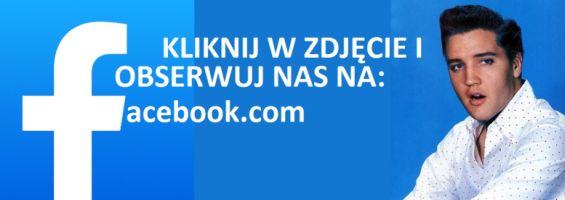
![Easy Come, Easy Go - Elvis Presley [DVD] [1967]](https://elvisradio24h.com/wp-content/uploads/2025/05/517qlR59JwL._SX300_SY300_QL70_ML2_.jpg)
If you want to visit more articles about the life of Elvis Presley, enter the following Elvis Radio 24h link: https://elvisradio24h.com/tag/articles Thanks TCB
We remind you that you can also listen to Elvis Radio 24 hours on your mobile phone by downloading our free applications for Android in the Play Store https://play.google.com/store/apps/details?id=com.icreo.elvisradio24h1, and for iPhone in your Apple Store https://apps.apple.com/app/elvis-radio-24h/id6444257119. Thank you very much!!..
